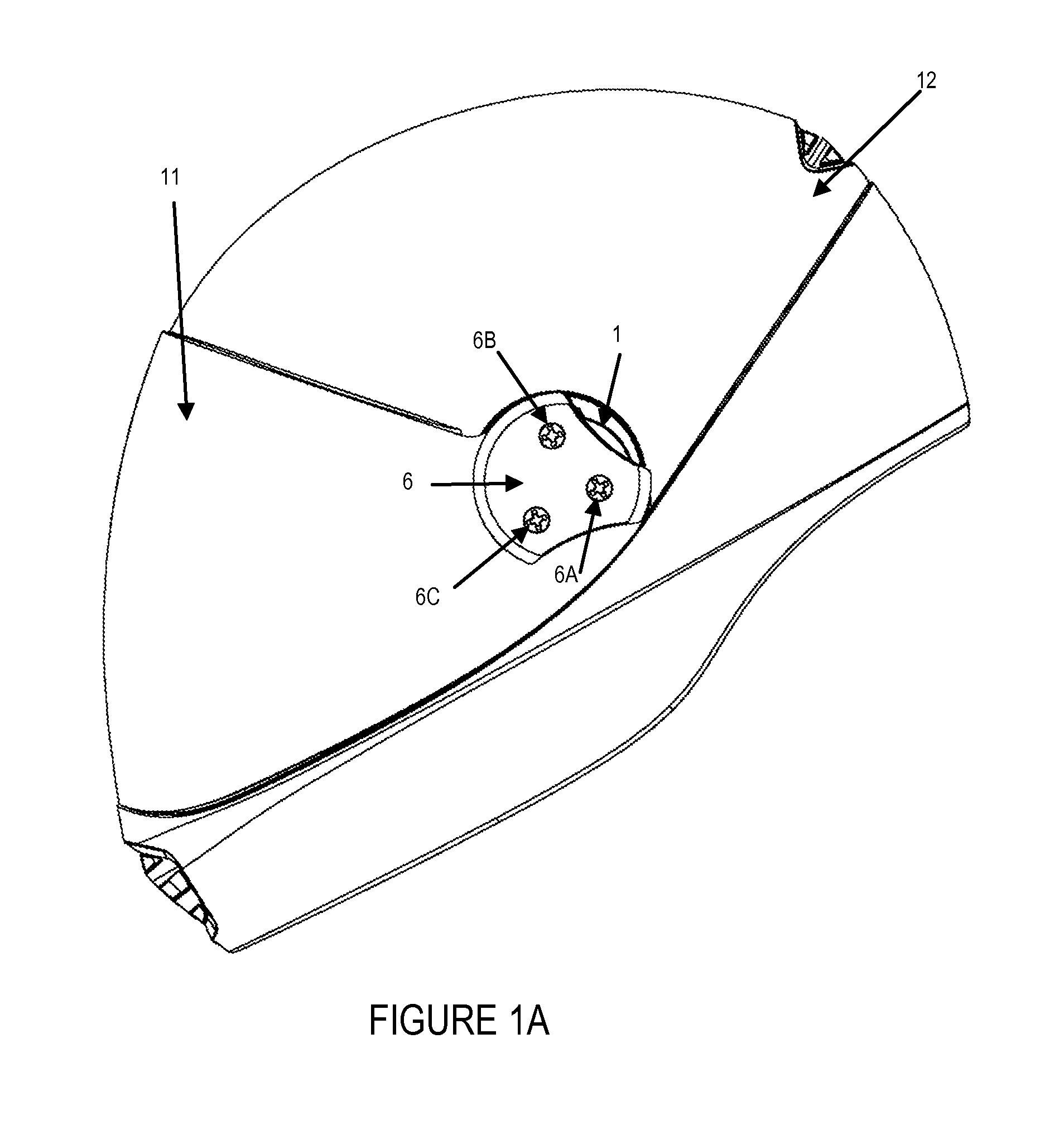Helmet and visor locking mechanism
a technology of locking mechanism and visor, which is applied in the field of helmet locking mechanism, can solve the problems of many helmets opening in freefall, helmets fixed to helmets that do not allow the wearer to open the face shield, and the use of known motorcycle type face shield lock mechanism often fails to remain closed during use, so as to achieve convenient holding
- Summary
- Abstract
- Description
- Claims
- Application Information
AI Technical Summary
Benefits of technology
Problems solved by technology
Method used
Image
Examples
Embodiment Construction
[0031]Referring to the drawings, FIG. 1A shows a helmet assembly including a helmet 12 with a visor 11 (or face shield) in a closed, lowered, or fully down position with the visor pushed fully back thereby placing the visor lock assembly in a locked position. Visor locking plate 6, sometimes referred to as a gripping member, can be grasped by the wearer of helmet 12 and moved laterally forward (moving visor 11 away from the face of the wearer), thereby unlocking the locking mechanism. FIG. 1B shows the helmet assembly of FIG. 1 with the visor pulled forward so that it is in the unlocked position and ready for rotation. Screws 6A, 6B, and 6C, shown in FIGS. 1A and 1B, advantageously mount the visor locking plate 6 to the hub which can be seen in FIG. 2, while allowing the hub to rotate around body 1. Screw 10B which is slightly visible is illustrated more clearly in FIG. 3 and is used, along with another screw, to mount body 1 onto helmet 12.
[0032]FIG. 2 shows the helmet of FIGS. 1A ...
PUM
 Login to View More
Login to View More Abstract
Description
Claims
Application Information
 Login to View More
Login to View More - R&D
- Intellectual Property
- Life Sciences
- Materials
- Tech Scout
- Unparalleled Data Quality
- Higher Quality Content
- 60% Fewer Hallucinations
Browse by: Latest US Patents, China's latest patents, Technical Efficacy Thesaurus, Application Domain, Technology Topic, Popular Technical Reports.
© 2025 PatSnap. All rights reserved.Legal|Privacy policy|Modern Slavery Act Transparency Statement|Sitemap|About US| Contact US: help@patsnap.com



